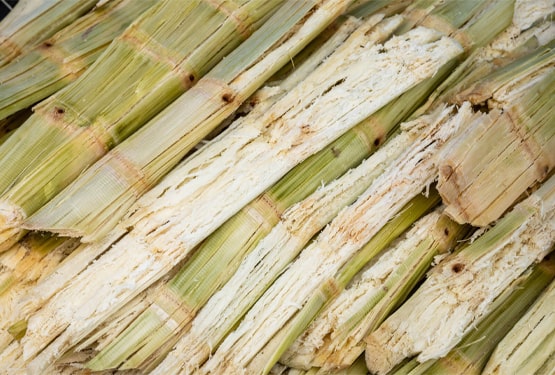Disposable Ware
Sugarcane Bagasse
Sugarcane bagasse is the fibrous byproduct that remains after sugarcane stalks are crushed to extract their juice. This material, which consists primarily of cellulose, hemicellulose, and lignin, has traditionally been considered waste. However, it has found numerous valuable applications across various industries due to its renewable and biodegradable properties.
Key Features
- Renewable Resource: As a byproduct of sugar production, bagasse is abundant and sustainable, contributing to a circular economy.
- Biodegradable: Being an organic material, bagasse decomposes naturally, reducing environmental impact compared to synthetic alternatives.
- High Fiber Content: Rich in cellulose and hemicellulose, making it suitable for various industrial applications.

Applications
- Paper Production: Used as a raw material to produce paper and paperboard, reducing the reliance on wood pulp.
- Eco-Friendly Packaging: Transformed into biodegradable and compostable packaging materials, such as plates, cups, and containers.
- Fuel for Boilers: Burned to produce steam and electricity in sugar mills, often generating more power than the mill's requirements.
- Ethanol Production: Can be converted into bioethanol, an alternative fuel, through fermentation processes.
- Fiberboards: Used in the manufacture of fiberboard and particleboard, providing an eco-friendly alternative to wood.
- Cement Additive: Mixed with cement to produce lightweight and insulating building materials.
- Animal Feed: Processed into animal feed, providing a high-fiber diet for livestock.
- Soil Amendment: Used as a mulch or compost, improving soil structure and fertility.
- Tableware: Made into biodegradable tableware and cutlery, offering a sustainable alternative to plastic.
- Bioplastics: Processed to create bioplastics, which are used in various applications, from packaging to consumer goods.